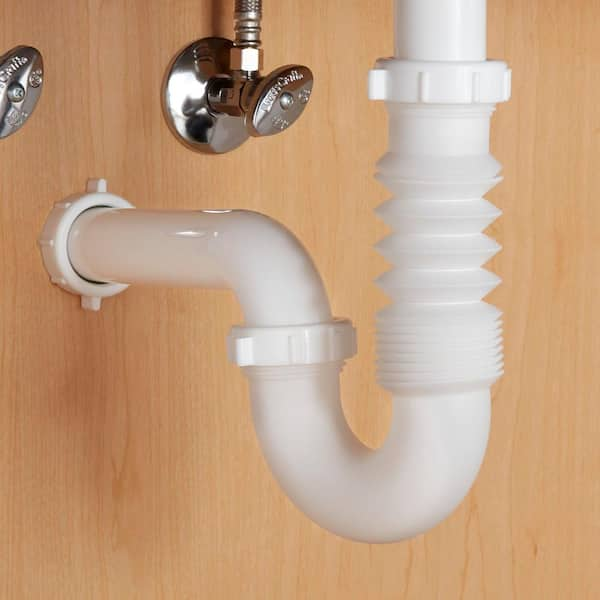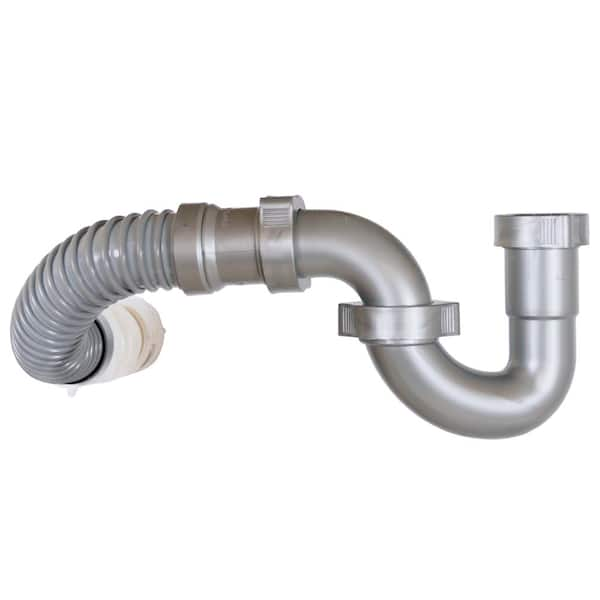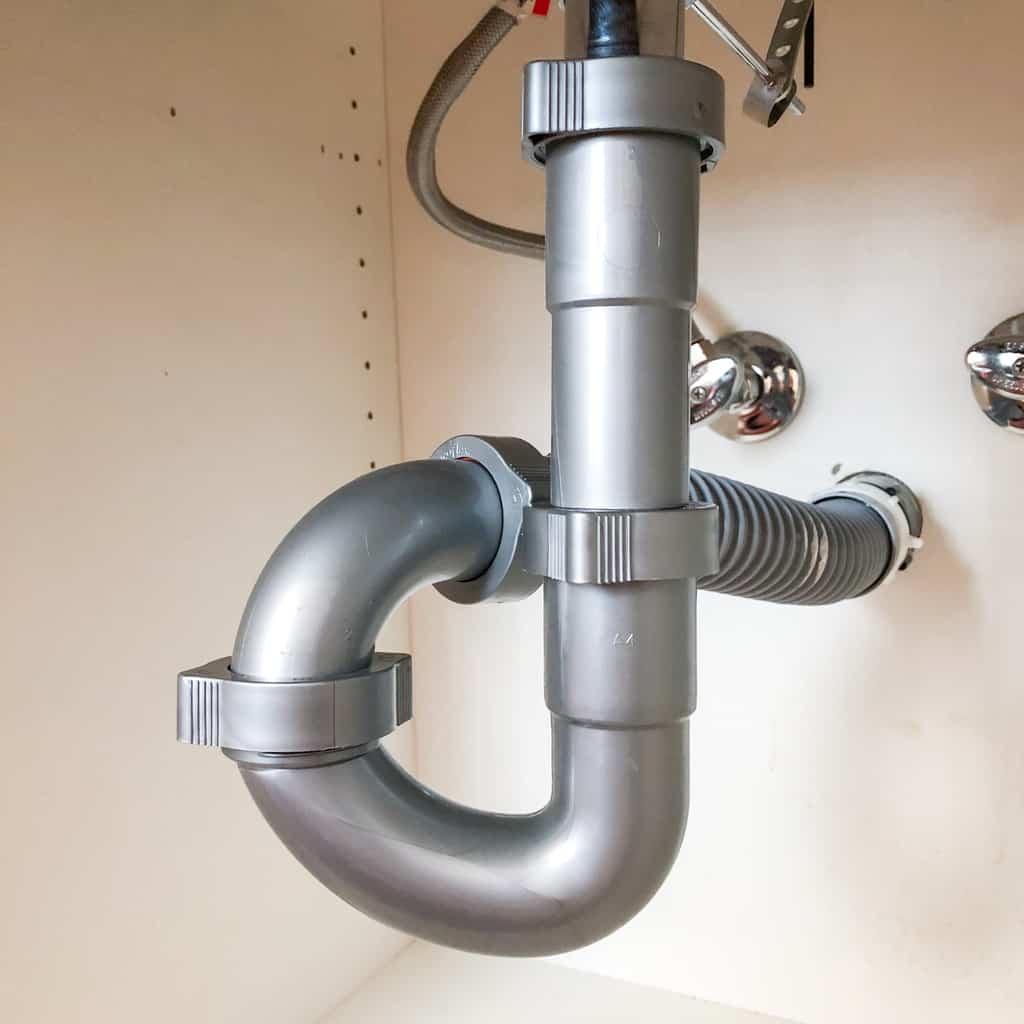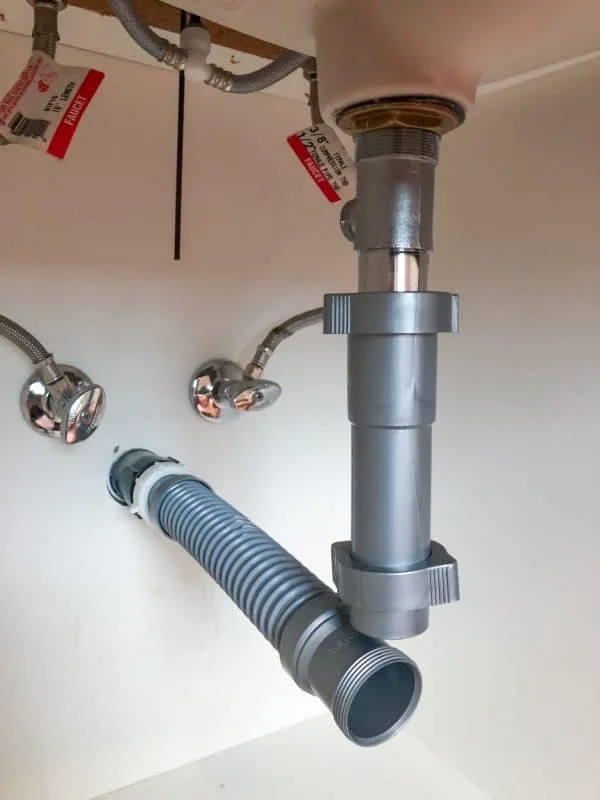What is a Flex Drain Pipe and Why is it Ideal for Bathroom Sinks?
When it comes to bathroom sink installations, the choice of a drain pipe is crucial for ensuring proper drainage. One option that has gained popularity in recent years is the flex drain pipe. We will explore what a flex drain pipe is and why it is an ideal choice for bathroom sinks.
- Understanding Flex Drain Pipe: A flex drain pipe is a flexible, corrugated pipe made from durable materials such as polypropylene or PVC. It is designed to be flexible and easily bendable, allowing for smooth installation in tight spaces. Unlike traditional rigid pipes, flex drain pipes can be easily maneuvered around obstacles and adjusted to fit the specific requirements of your bathroom sink setup.
- Easy Installation: One of the primary advantages of using a flex drain pipe in your bathroom sink installation is the ease of installation. The flexibility of the pipe makes it simple to navigate through tight spaces, such as under cabinets or around corners. It eliminates the need for complex and time-consuming maneuvers associated with traditional rigid pipes, saving both time and effort during installation.
- Leak-Free Performance: Flex drain pipes are known for their leak-free performance. The corrugated design of the pipe allows for better sealing and prevents leakage, ensuring that your bathroom sink operates smoothly without any plumbing issues. Additionally, the flexible nature of the pipe reduces the risk of stress fractures or cracks, further minimizing the chances of leaks.
- Compatibility with Various Sink Types: Flex drain pipes are compatible with a wide range of bathroom sink types. Whether you have an undermount sink, a wall-mounted sink, or a pedestal sink, a flex drain pipe can easily adapt to the specific sink configuration. This versatility makes it an ideal choice for both residential and commercial bathroom sink installations.
- Resistance to Clogs and Blockages: Another advantage of using a flex drain pipe is its resistance to clogs and blockages. The smooth interior surface of the pipe minimizes the accumulation of debris and prevents the formation of stubborn clogs. This ensures that water flows freely and efficiently, reducing the need for frequent maintenance and costly repairs.

Advantages of Using a Flex Drain Pipe in Your Bathroom Sink Installation
Choosing the right drain pipe for your bathroom sink installation is crucial for ensuring optimal performance and longevity. Below are the advantages of using a flex drain pipe in your bathroom sink installation, highlighting the benefits that make it a preferred choice among homeowners and professionals alike.
Flexibility and Easy Maneuverability: One of the primary advantages of using a flex drain pipe is its flexibility and easy maneuverability. Unlike rigid pipes, which are difficult to bend and adjust, flex drain pipes can be easily maneuvered around obstacles, making installation a breeze. This flexibility also allows for better alignment with the existing plumbing system, ensuring a seamless connection between different components.
Cost-Effective Solution: Flex drain pipes offer a cost-effective solution for bathroom sink installations. Their ease of installation translates into reduced labor costs and shorter installation times. Additionally, flex drain pipes are often less expensive than traditional rigid pipes, making them an affordable choice for homeowners on a budget.
Resistance to Corrosion and Chemicals: Flex drain pipes are typically made from durable materials such as polypropylene or PVC, which are highly resistant to corrosion and chemicals. This makes them an ideal choice for bathroom sinks, where exposure to water and cleaning agents is common. The corrosion-resistant properties of flex drain pipes ensure long-term durability and minimize the need for frequent replacements.
Quieter Operation: Another advantage of using a flex drain pipe in your bathroom sink installation is its ability to reduce noise. The flexible nature of the pipe absorbs vibrations and minimizes the transmission of sound, resulting in a quieter plumbing system. This is particularly beneficial for bathrooms located near bedrooms or living areas, where noise reduction is desired.
Easy Maintenance and Repair: Flex drain pipes are designed for easy maintenance and repair. In the event of a blockage or clog, the flexible nature of the pipe allows for easier access and clearing of the obstruction. Additionally, if a section of the pipe needs to be replaced, it can be easily cut and replaced without the need for complex procedures or extensive rework.
How to Install a Flex Drain Pipe in Your Bathroom Sink
Installing a flex drain pipe in your bathroom sink can be a straightforward process if you follow the right steps. We will provide you with a step-by-step guide on how to install a flex drain pipe in your bathroom sink, ensuring a smooth and efficient installation.
Gather the Necessary Tools and Materials: Before you begin the installation process, gather all the necessary tools and materials. This may include a flex drain pipe, adjustable wrench, plumber’s tape, PVC primer and cement, silicone sealant, and a hacksaw. Ensure that you have everything you need to complete the installation without interruptions.
Remove the Old Drain Pipe: Start by removing the old drain pipe from your bathroom sink. This may involve unscrewing the nuts connecting the pipe to the sink drain and the P-trap. Use an adjustable wrench to loosen the nuts and disconnect the pipe from the sink.
Measure and Cut the Flex Drain Pipe: Measure the required length of the flex drain pipe by aligning it with the sink drain and the P-trap. Use a hacksaw to cut the pipe to the desired length, ensuring a proper fit. Smooth the cut edge with sandpaper to remove any rough edges.
Attach the Flex Drain Pipe: Apply plumber’s tape to the threads of the sink drain and the P-trap. This will ensure a tight and leak-free connection. Attach one end of the flex drain pipe to the sink drain, tightening the nut with an adjustable wrench. Then, connect the other end of the pipe to the P-trap, ensuring a secure fit.
Secure the Connections: To ensure a watertight connection, secure the connections using PVC primer and cement. Apply the primer to the outside of the pipe and the inside of the fittings, then apply the cement. Quickly join the parts together, twisting slightly to ensure a proper bond. Wipe away any excess primer or cement.
Apply Silicone Sealant: To further prevent leaks, apply silicone sealant around the connection points of the flex drain pipe. This will provide an extra layer of protection and ensure a secure and watertight installation. Allow the sealant to dry according to the manufacturer’s instructions before using the sink.
Traditional Rigid Pipe: Which One Should You Choose?
When it comes to choosing a drain pipe for your bathroom sink, you may be faced with the decision between a flex drain pipe and a traditional rigid pipe. We will compare the two options and help you determine which one is the better choice for your bathroom sink installation.
Flexibility and Ease of Installation: One of the key differences between a flex drain pipe and a traditional rigid pipe is its flexibility. Flex drain pipes are designed to be flexible and easily bendable, allowing for easy installation in tight spaces. On the other hand, traditional rigid pipes are less flexible and may require additional fittings or adjustments to fit your specific installation needs. If you have limited space or obstacles to navigate, a flex drain pipe may be the better choice.
Durability and Longevity: When it comes to durability and longevity, both flex drain pipes and traditional rigid pipes can be reliable options. However, flex drain pipes are often made from durable materials such as polypropylene or PVC, which are resistant to corrosion and chemicals. This can result in a longer lifespan and reduced maintenance requirements compared to traditional rigid pipes, which may be more susceptible to corrosion and wear over time.
Cost and Affordability: Cost is often a significant factor when making any plumbing-related decision. In terms of cost, flex drain pipes are generally more affordable than traditional rigid pipes. Their ease of installation also contributes to cost savings, as less labor is required for installation. If you are working within a tight budget, a flex drain pipe may be a more cost-effective choice.
Compatibility and Versatility: Flex drain pipes are known for their compatibility and versatility. They can be easily adapted to different sink configurations, making them suitable for various types of bathroom sinks, including undermount sinks, wall-mounted sinks, and pedestal sinks. Traditional rigid pipes may require additional fittings or adjustments to fit certain sink types, potentially adding complexity to the installation process.
Noise Reduction: If noise reduction is a priority for you, a flex drain pipe may be the better choice. The flexible nature of the pipe absorbs vibrations and minimizes the transmission of sound, resulting in a quieter plumbing system. Traditional rigid pipes, on the other hand, may transmit more noise, especially if they are not properly insulated.
Maintenance Tips for Keeping Your Flex Drain Pipe in Top Shape
To ensure the optimal performance and longevity of your flex drain pipe in your bathroom sink installation, regular maintenance is essential. Below we provide you with some valuable maintenance tips to keep your flex drain pipe in top shape, preventing clogs, leaks, and other plumbing issues.
Regular Cleaning: Regularly clean your flex drain pipe to prevent the buildup of debris and potential clogs. Remove any visible debris or hair from the drain opening using a drain snake or a wire hanger. Follow up with a mixture of hot water and vinegar to dissolve any grease or soap scum that may have accumulated.
Avoid Harsh Chemicals: Avoid using harsh chemicals, such as drain cleaners, to clear clogs in your flex drain pipe. These chemicals can be corrosive and may damage the pipe’s material over time. Instead, opt for natural alternatives or use a plunger or drain snake to clear minor clogs.
Maintain Proper Ventilation: Ensure that your flex drain pipe has proper ventilation to prevent the buildup of foul odors and gases. Make sure that the vent pipe connected to the drain system is clear of any obstructions and functioning correctly. This will help maintain proper airflow and prevent any unpleasant smells from entering your bathroom.
Insulate the Pipe: Consider insulating your flex drain pipe, especially if it is located in a cold or exposed area. Insulation helps prevent freezing during colder months, which can lead to pipe damage and blockages. Use pipe insulation sleeves or wrap the pipe with foam insulation to provide an extra layer of protection.
Be Mindful of What Goes Down the Drain: To prevent clogs and blockages, be mindful of what goes down the drain. Avoid disposing of large food scraps, grease, or hair into the sink. Use drain covers or strainers to catch debris and clean them regularly. This will help keep your flex drain pipe clear and free-flowing.
Address Issues Promptly: If you notice any issues with your flex drain pipe, such as slow drainage or recurring clogs, address them promptly. Ignoring plumbing issues can lead to more significant problems down the line. Use appropriate tools like drain snakes or plungers to clear minor clogs, and if the problem persists, consider seeking professional help to diagnose and resolve the issue.
Schedule Professional Inspections: Consider scheduling professional inspections of your plumbing system, including the flex drain pipe, on a regular basis. A professional plumber can identify any potential issues or signs of wear and tear that may require attention. Regular inspections can help catch problems early on and prevent costly repairs in the future.
SnappyTrap Universal Drain Kit for Bathroom Sinks DK-105
Alovexiong Flexible Drain Pipe Extension Hose Tail Pipe Bathroom Sink Expanded Tube Lavatory Sink Tailpiece Vessel Sink Flip Over Sink Drain Stopper
Keeney 1-1/2-in Plastic P-Trap
Peerless 1-1/2″ Plastic Flexible Lavatory/Kitchen Drain Trap.
How to Install a Flexible Waste Pipe When the Drain Doesnu0027t Line
SnappyTrap Universal Drain Kit for Bathroom Sinks DK-105
Flexible Drain Pipe, Angle Simple Flexible 1-1/4″ Extension Hose
How to Install a Flexible Waste Pipe When the Drain Doesnu0027t Line
Related Posts:
- Kohler Cast Iron Bathroom Sink
- Installing P Trap Under Bathroom Sink
- Bathroom Sink Skirt Set
- Extra Small Wall Mount Bathroom Sinks
- Bathroom Sink Stem
- Virtual Families 2 Bathroom Sink Is Leaking
- Latest Bathroom Sink Designs
- Bathroom Sink Countertop Combination
- Delta Bathroom Sink Faucet Cartridge Replacement
- Bathroom Sink Will Not Drain Not Clogged











